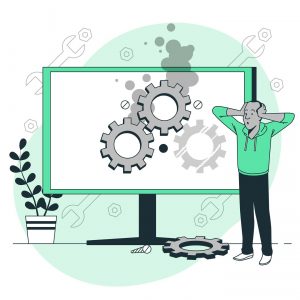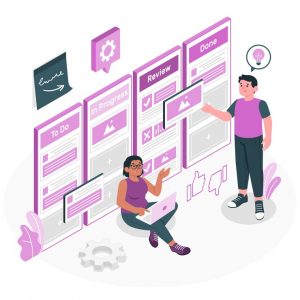In today’s fast-paced and ever-evolving business landscape, legacy applications can become a significant obstacle to staying competitive and innovative. These older systems, while once state-of-the-art, can now hinder an organization’s ability to adapt to changing market demands, take advantage of the latest technologies, and enhance overall efficiency. This is where Legacy Application Modernization comes into play, as it acts as a catalyst for digital transformation, enabling businesses to thrive in the digital age.
The Necessity of Legacy Application Modernization
Legacy applications, often developed decades ago, are notorious for being rigid, difficult to maintain, and costly to operate. They might not be able to take advantage of the latest technological advancements, leading to decreased performance and potential security vulnerabilities. In a world where businesses are increasingly reliant on digital solutions, this technological stagnation can be a significant disadvantage.
“For many organizations, legacy systems are seen as holding back the business initiatives and business processes that rely on them,” says Stefan Van Der Zijden, VP Analyst, Gartner. “When a tipping point is reached, application leaders must look to application modernization to help remove the obstacles.”
source from 7 Options To Modernize Legacy Systems (gartner.com)
Digital Transformation through Application Modernization
Digital transformation is not merely about adopting new technologies; it’s about leveraging these technologies to fundamentally transform how a business operates. Legacy application modernization is a cornerstone of this transformation process.
By updating or replacing outdated systems with more agile and adaptable solutions, organizations can harness the following benefits:
- Enhanced Efficiency: Modernized applications are built with efficiency in mind. They can streamline processes, automate repetitive tasks, and provide real-time data insights, thereby accelerating decision-making.
- Improved User Experience: A modernized application often equates to a better user experience. It can be optimized for mobile devices, offers a more intuitive interface, and provides users with features that align with current expectations.
- Scalability: Modern applications are more scalable, allowing businesses to accommodate growth and changing demands with ease. This agility can be pivotal in a rapidly evolving business landscape.
- Cost Reduction: Legacy systems often carry high maintenance and operational costs. Modernization can lead to cost savings through improved efficiency, reduced downtime, and lower support requirements.
- Competitive Advantage: Businesses that modernize their applications can stay ahead of the competition by swiftly adapting to market changes and customer needs.

Steps to Take Care of While Modernizing Legacy Applications
- Assessment: The first step is to evaluate the existing systems and understand their limitations. What aspects of the legacy application need improvement? What is the business case for modernization?
- Define Goals: Clearly outline the objectives of modernization. What do you aim to achieve with the updated application? Define specific, measurable goals to guide the process.
- Select the Right Technology: Choose technologies that align with your business goals and budget. Whether it’s cloud migration, containerization, or adopting microservices, the technology stack must support your modernization strategy.
- Data Migration and Integration: Data is often the heart of legacy applications. Ensure a smooth transition of data and focus on seamless integration with other systems to avoid silos.
- Testing: Rigorous testing is essential to ensure the modernized application performs as expected. Test for functionality, security, and performance.
- Security: Security is paramount. Modernized applications should have robust security features to protect against evolving threats. Implement best practices and consider data encryption, access control, and regular security audits.
- User Training: Train your staff to adapt to the new application. Their proficiency with the updated system will impact overall efficiency and user satisfaction.
Leveraging the Latest Technologies
To realize the full potential of application modernization, organizations should embrace the latest technologies and trends:
- Cloud Computing: Migrating to the cloud offers scalability, flexibility, and cost-efficiency. It enables businesses to access and manage their applications from anywhere, ensuring uninterrupted service.
- Microservices: Decomposing monolithic applications into microservices allows for greater flexibility, faster development cycles, and improved fault isolation.
- API Integration: Leveraging APIs for data exchange between applications is critical for real-time information sharing. APIs facilitate seamless interaction between modern and legacy systems.
- Machine Learning and AI: These technologies can be integrated into modernized applications to improve decision-making, automate tasks, and enhance user experiences.
- DevOps Practices: Implementing DevOps practices ensures rapid development, testing, and deployment of applications, enhancing collaboration between development and operations teams.
Ensuring Security in Modernized Applications
Security is paramount in the digital age. When modernizing legacy applications, it’s essential to incorporate robust security measures:
- Regular Security Audits: Conduct regular security audits and vulnerability assessments to identify and mitigate potential risks.
- Data Encryption: Implement strong data encryption measures to protect sensitive information.
- Access Control: Enforce access controls to ensure that only authorized personnel can access specific application functionalities and data.
- Authentication and Authorization: Use multifactor authentication and role-based authorization to secure user access.
- Security Patch Management: Keep all components of the modernized application up to date with the latest security patches.
Achieving Better Performance and Faster Business Processes
Modernized applications, when built and maintained correctly, can significantly enhance performance and streamline business processes. Here’s how:
- Improved Responsiveness: Modernized applications can respond more quickly to user requests, leading to a better user experience.
- Real-time Data: Access to real-time data allows for more informed decision-making and quicker responses to changing conditions.
- Automation: Modernized applications can automate routine tasks, reducing manual efforts and accelerating processes.
- Scalability: As mentioned earlier, modern applications can scale effortlessly, accommodating increased workloads without compromising performance.

In conclusion, Legacy Application Modernization is the key to unlocking the full potential of digital transformation.
By following a structured approach, adopting the latest technologies, prioritizing security, and focusing on performance optimization, organizations can revitalize their operations and remain competitive in an increasingly digital world. The path to modernization may be challenging, but the rewards in terms of efficiency, user satisfaction, and a competitive edge are worth the effort.
Connect with our expert team to know more… Skeletos IT Services Pune | Contact Us






